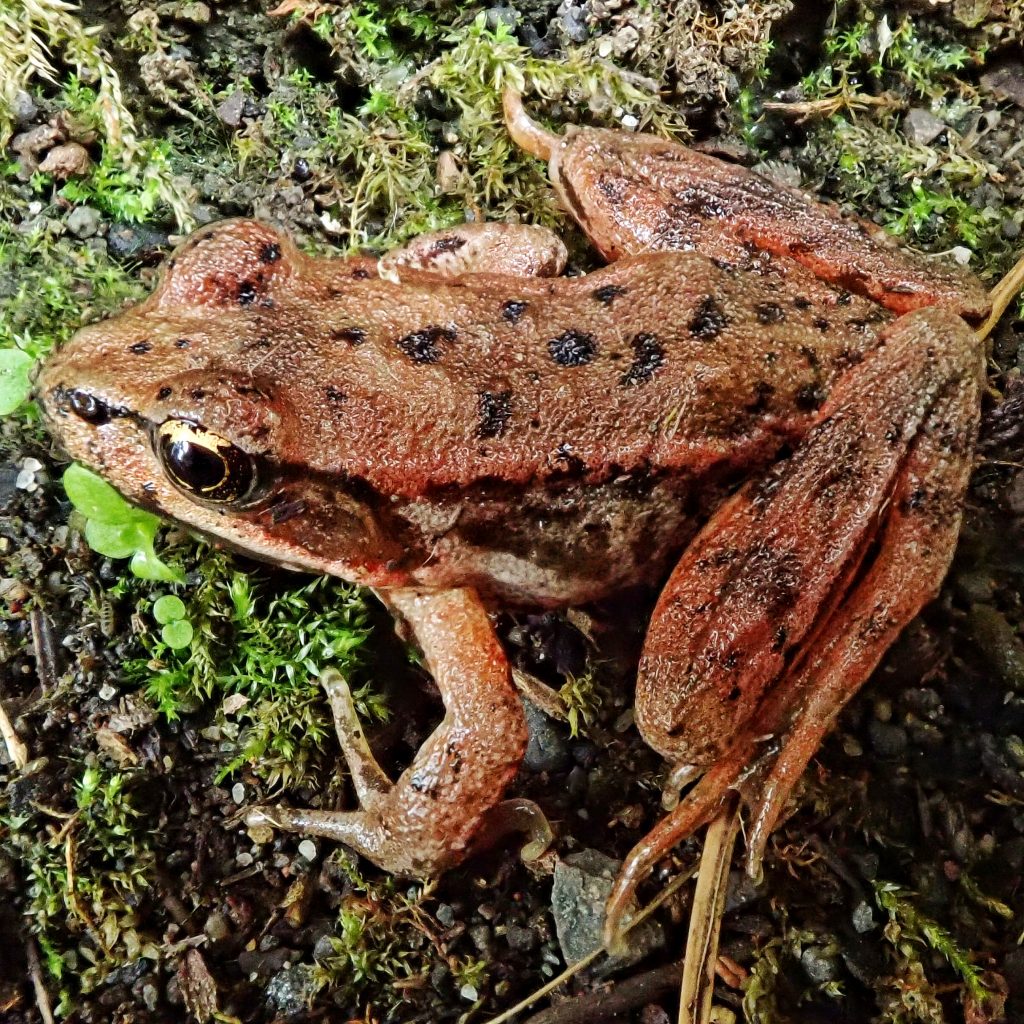
I really enjoy my weekly hikes with my nbo Morgan. Hike is probably a misnomer. They used to be hikes, with a dedication to exercise and distance. But nowadays I’m overweight, out of shape, slow, and very easily distracted by biotic minutiae. Sometimes they have energy to burn, and they charge ahead, returning to find me only hundreds of yards up the trail, whilst I plod along, constantly scanning (though I still miss much!), periodically dropping to a knee to photograph some botanical marvel, or to flip a log. When we are together they tell me of their life, about the challenges of being openly gender queer, the intolerance and outright hostility they face on a daily basis. They tell me about their victories and losses, their burning loves and shattering heartbreak, and about the trials and tribulations, and occasional successes and feel good events, of being a social worker at CPS at this time in history. Life is much more complicated for them at 27 than it was for me at 27, and exponentially more complicated than mine at 59. But they are gracious enough to at least pretend interest in my pedantic rambling about microhabitats and taxonomy, with diatribes and rants punctuating the incessant blathering on about birds, bugs, and botany. It’s one of my favorite times of the week.
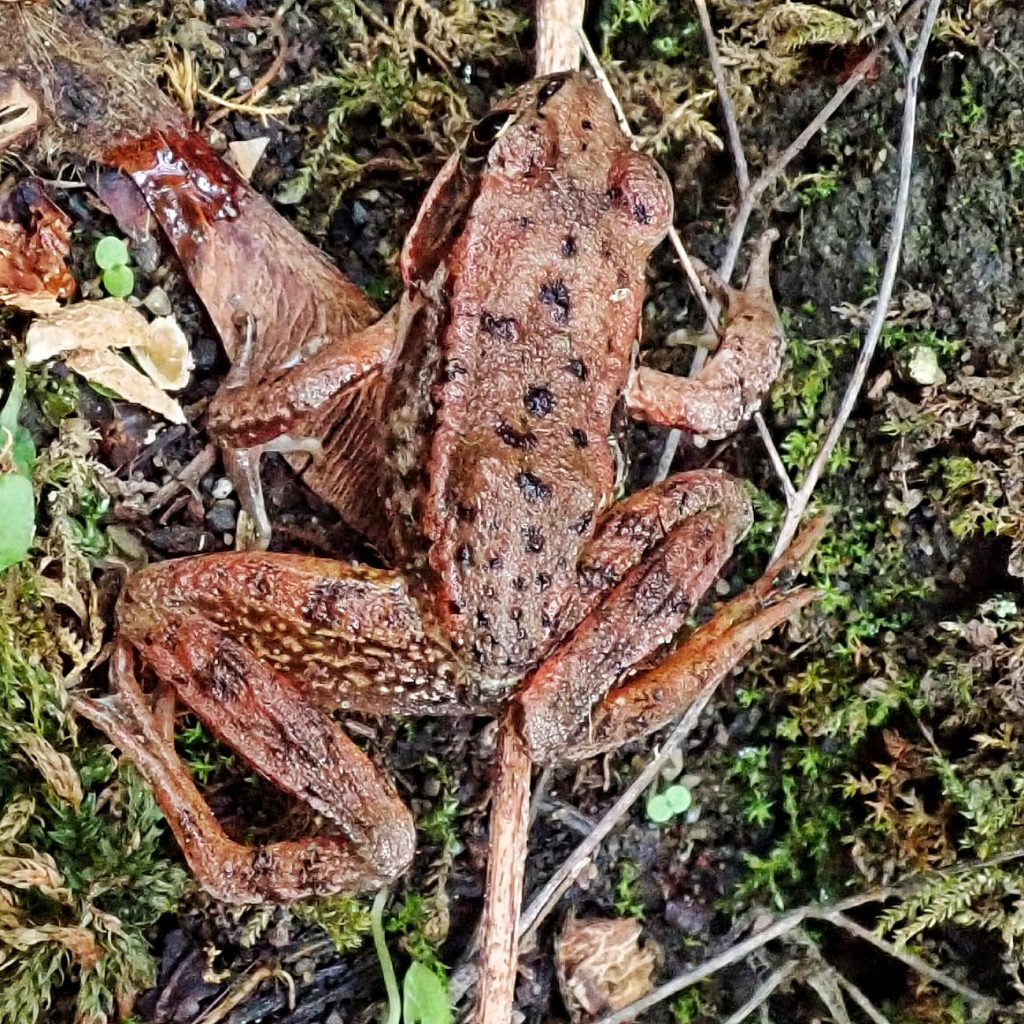
And, from a purely selfish viewpoint, it’s really handy for this color blind recreational naturalist to have somebody there who can tell me if something is actually red! Which is the service they rendered when I found this Northern Red-legged Frog last Friday. I was thumbing through my amphibians book, back and forth between Northern Red-legged, Spotted, and Cascade Frogs, when that little light went on and I got my hand wet, grabbed the frog, showed them the underside, and asked (not wanting to prejudice the answer) “what color is this?”. They of course answered “red”, or I wouldn’t be telling you this story in this particular profile. It would be a handy thing having optical cones capable of registering the full spectrum of visible light.
When I looked deeper into this species I realized I didn’t actually need Morg’s perceptual ability. At that location and elevation (base of Horsetail Falls in the Columbia River Gorge, elevation 200’) it could only be Northern Red-legged Frog. Cascades Frogs aren’t found below 2000’ , and sadly it appears that Oregon Spotted Frogs have been extirpated from that area.
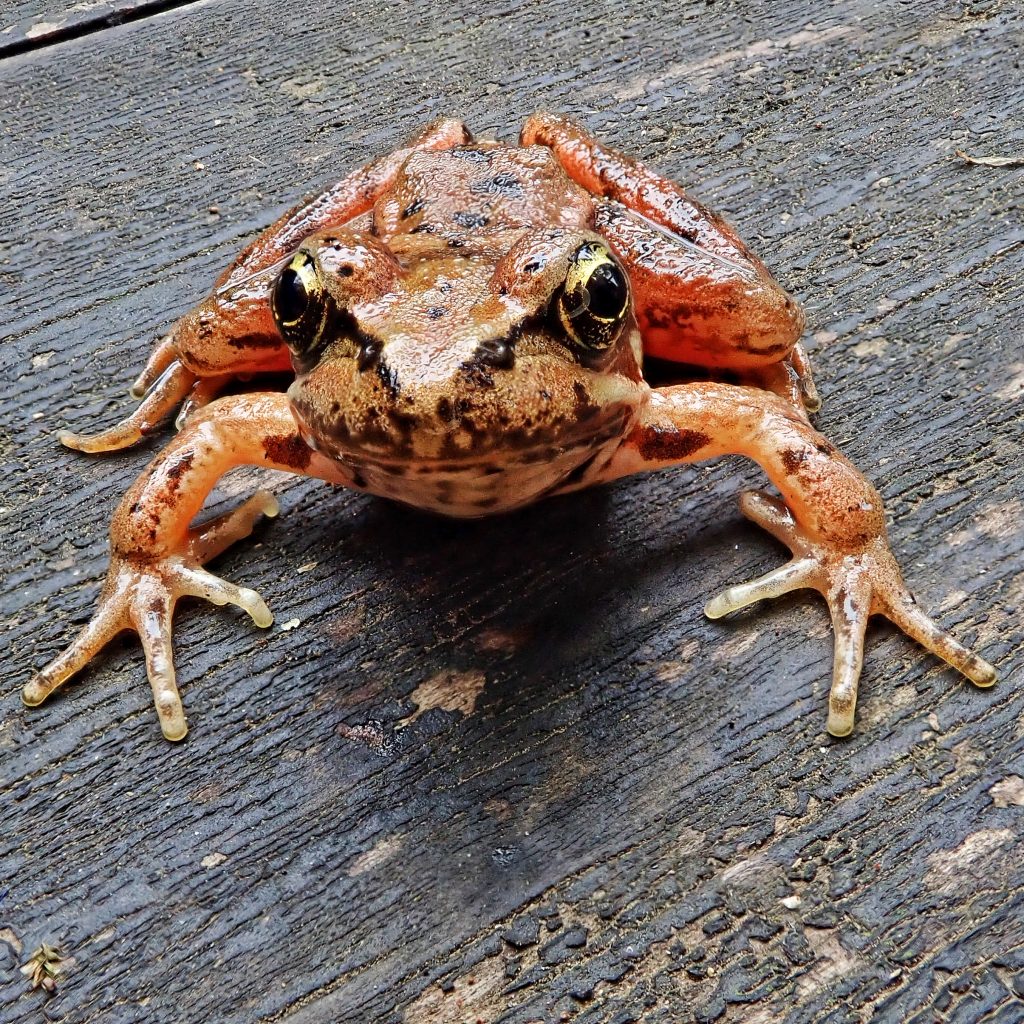
Description– Medium sized (females up to 100mm long; males up to 70mm) reddish brown, green, or gray frog, with small all black spots on back and sides; black stripe through the eye from snout to shoulder, and a light colored strip from the shoulder to under the eye; dorsolateral fold extends from behind the eye to the hip; and, of course, the eponymous red of the legs, which is found on the underside of the hind legs and is (so they say) translucent red shading to pink (I don’t have a picture of this because I’m not really sure how to hold a squirming frog in one hand, without hurting it, while taking a one-handed photo with the other: but I’ll work on it), with a greenish or reddish mottling in the groin.
Similar species- Cascades Frog (Rana cascadae) is usually yellow on underside of legs, the groin is unmarked and similar in color to the surrounding area, and it is only found above 2000’; Oregon Spotted Frog (Rana pretiosa) and Columbia Spotted Frog (Rana luteiventris) lack mottling in groin; dorsolateral fold doesn’t reach hip; eyes are noticeably upturned, whereas they point to the sides in R. aurora.
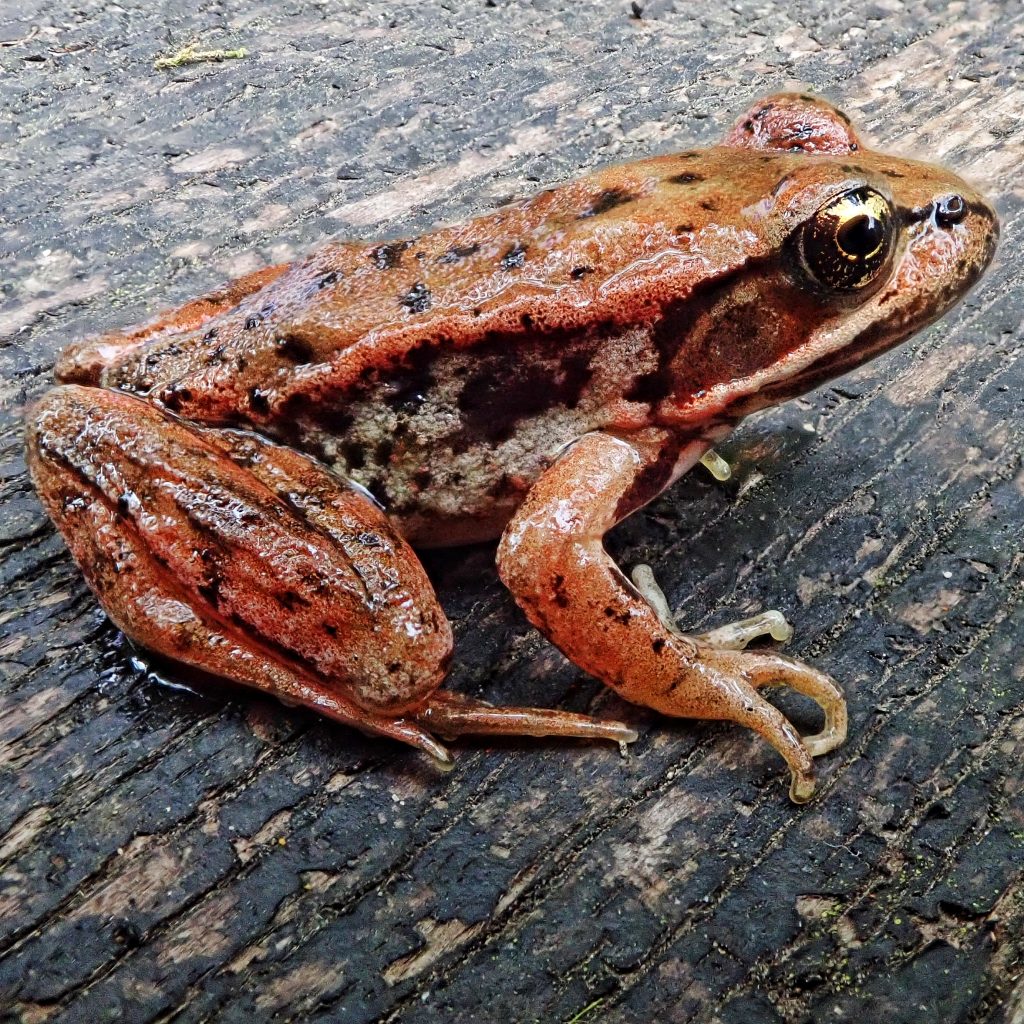
Habitat– Rana aurora requires slow streams or shallow, stable ponds, for breeding, usually in wooded or forested areas. Adults are most common near water, but can be found in very terrestrial settings, if they are damp. One adult female was found to have travelled almost 3 miles from her natal pond!
Range– West of the Cascades crest
Eats-Tadpoles eat plankton, algae, and other fine vegetation; adults eat a wide variety of arthropods.
Eaten by-Tadpoles are eaten by everything that can catch one, from ducks and fish to dragonfly nymphs; adults are preyed upon by garter snakes, herons, mink, and other carnivorous small mammals.
Adults active– Year around in temperate zones; may hibernate during mid winter further north or at higher elevations.
Etymology of names– Rana is Latin for frog. The epithet aurora is Latin for dawn, and probably refers to the ventral leg colors being reminiscent of those early morning hues.
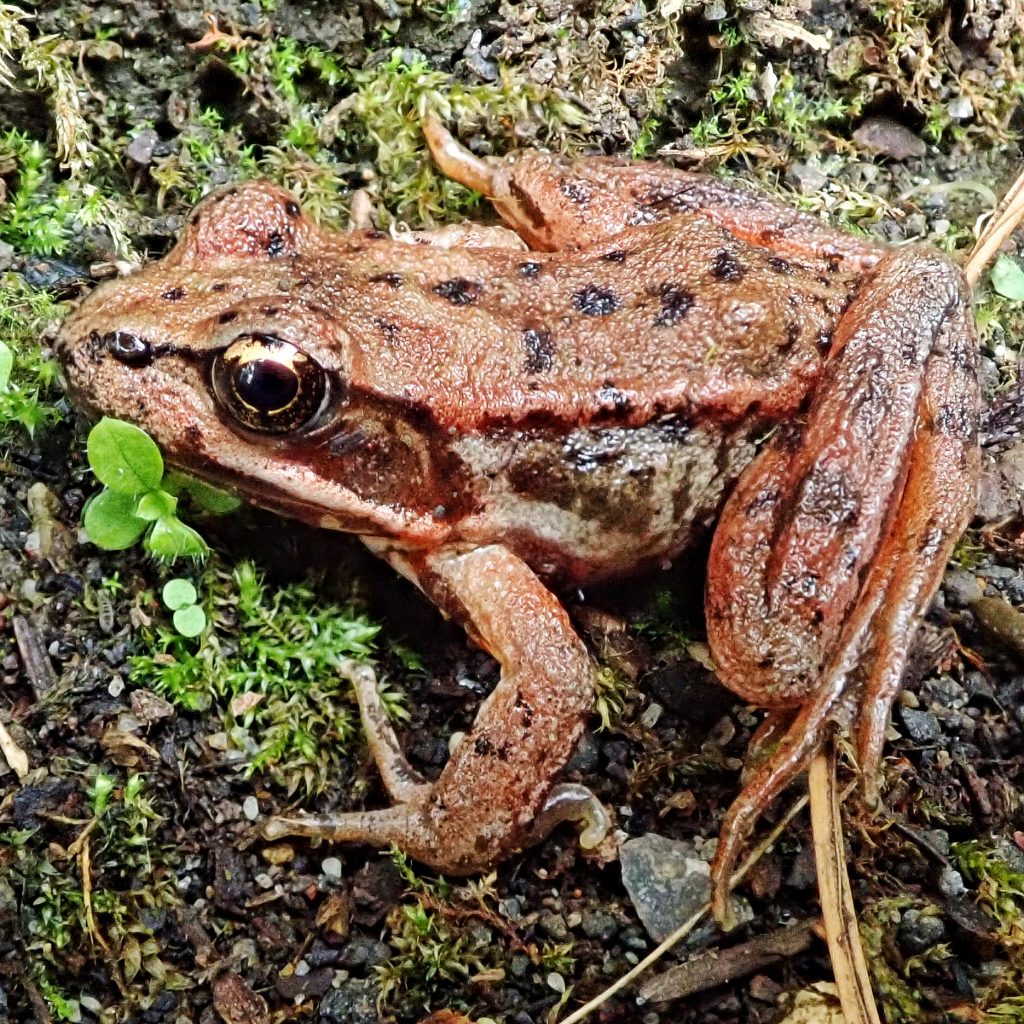
http://www.californiaherps.com/frogs/pages/r.aurora.html
https://en.wikipedia.org/wiki/Northern_red-legged_frog
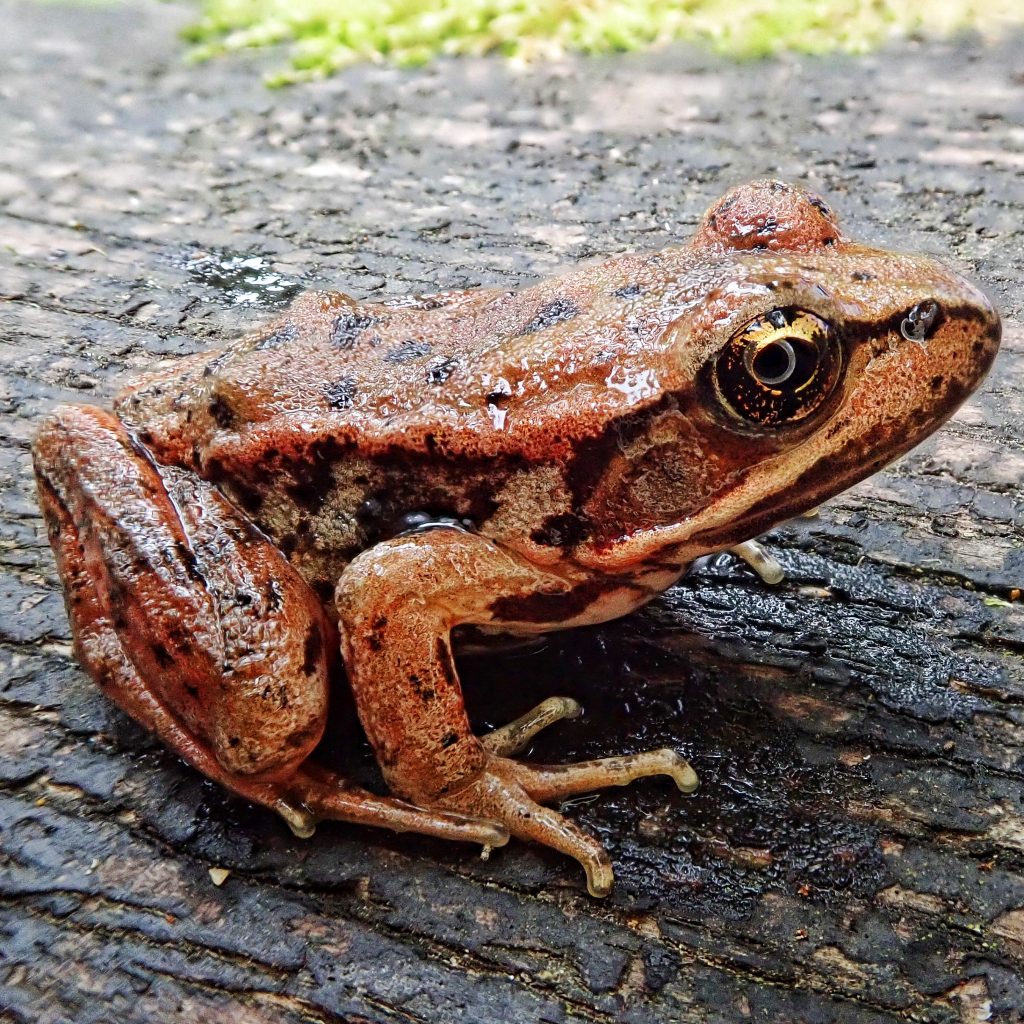
Sounds like a wonderful complementary relationship you have with your second set of eyes! I am amazed how greatly appreciative you are of all the flora and fauna out there, being color-blind!
They are the best!
It’s one of the highlights of my week and many memories will be looked on with fondness for years to come!